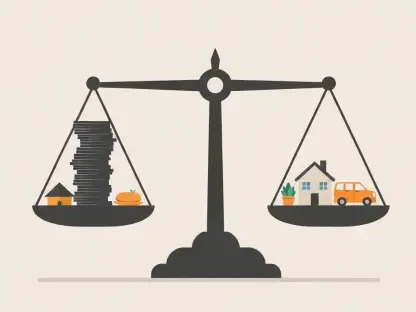The global banking smart cards market is poised for remarkable growth, projected to skyrocket from 35 billion USD in 2023 to an impressive yet unspecified figure by 2032, with a Compound Annual Growth Rate (CAGR) of 9.57%. Leading financial institutions, including Visa, Mastercard, American Express, Discover, and Gemalto, are expected to play key roles in this anticipated expansion. These smart cards are crucial for secure electronic transactions, where the embedded microchips enhance security features and gain a significant market share. The market segmentation includes contactless, EMV, prepaid, debit, and credit cards, with applications spanning retail transactions, online payments, mobile payments, and international transactions. Understanding the factors driving this growth and the potential challenges is essential for stakeholders in the industry.
Market Segmentation and Regional Analysis
The banking smart cards market is segmented by types and applications, which significantly influence its dynamics. Types of smart cards include contactless, EMV, prepaid, debit, and credit, each catering to different transactional needs and security requirements. Contactless cards have surged in popularity, driven by the convenience of tap-and-go payments, whereas EMV cards are prized for their enhanced security features. Prepaid cards, debit, and credit cards offer unique advantages, making them indispensable for various financial transactions.
Geographical analysis provides insight into regional market performance. North America and Europe currently dominate the market due to advanced technological infrastructure and widespread adoption of smart card technology. However, Asia-Pacific is identified as the fastest-growing region, driven by a burgeoning e-commerce sector and increasing demand for secure payment solutions. Factors such as urbanization, a rising middle class, and increasing smartphone penetration contribute significantly to this growth. Latin America, though relatively smaller in market share, shows promising potential with gradual digital transformation and improved financial inclusion initiatives.
Growth Drivers and Challenges
Several key drivers are propelling the banking smart cards market toward its anticipated growth trajectory. Enhanced security features due to embedded microchips make smart cards a preferred choice over traditional magnetic stripe cards. The growing demand for contactless payments, especially in the wake of the COVID-19 pandemic, has further accelerated adoption. Global e-commerce expansion also plays a pivotal role, as consumers and businesses increasingly rely on secure, efficient payment methods.
Despite these positive trends, the market faces notable challenges. Technological adaptation and integration pose significant hurdles, especially for regions with lower digital literacy rates. Ensuring seamless interoperability of smart cards with various payment systems and devices remains a critical issue. Regulatory compliance and evolving cybersecurity threats also add layers of complexity, requiring continuous innovation and vigilant monitoring. Financial institutions and market players must address these challenges to sustain growth and maintain consumer trust.
Strategic Developments and Market Insights
Strategic developments such as agreements, expansions, new product launches, and acquisitions are vital for maintaining and expanding market share. Key players must continuously innovate and adopt growth strategies to stay competitive. For instance, collaborations between financial institutions and technology firms can drive the development of next-generation smart card solutions. Expansion into emerging markets offers significant opportunities, while new product launches cater to evolving consumer preferences and security needs.
The report by HTF Market Intelligence provides a comprehensive analysis, evaluating market size, trends, and competitive landscapes. Tools like SWOT analysis and frameworks such as PESTLE (Political, Economic, Social, Technological, Legal, and Environmental) are utilized to understand market dynamics thoroughly. These methods offer valuable insights for managers, analysts, and industry experts, helping them navigate the complexities of the banking smart cards market. They also highlight the importance of understanding consumer behavior and market performance across different geographies.
Conclusion
Several key drivers are fueling the growth of the banking smart cards market. Enhanced security features, thanks to embedded microchips, make smart cards superior to traditional magnetic stripe cards. The rising demand for contactless payments, especially since the COVID-19 pandemic, has further accelerated the adoption of smart cards. Additionally, the global expansion of e-commerce necessitates secure and efficient payment methods, thus bolstering the market.
However, the market is not without challenges. One significant hurdle is the technological adaptation and integration, particularly in regions with lower digital literacy rates. Ensuring that smart cards seamlessly work with various payment systems and devices is another critical issue. Moreover, regulatory compliance and evolving cybersecurity threats add layers of complexity, requiring continuous innovation and vigilant monitoring. Financial institutions and market players must address these challenges to sustain growth and maintain consumer trust in the smart card market. By focusing on these issues, the industry can continue on its positive trajectory.









